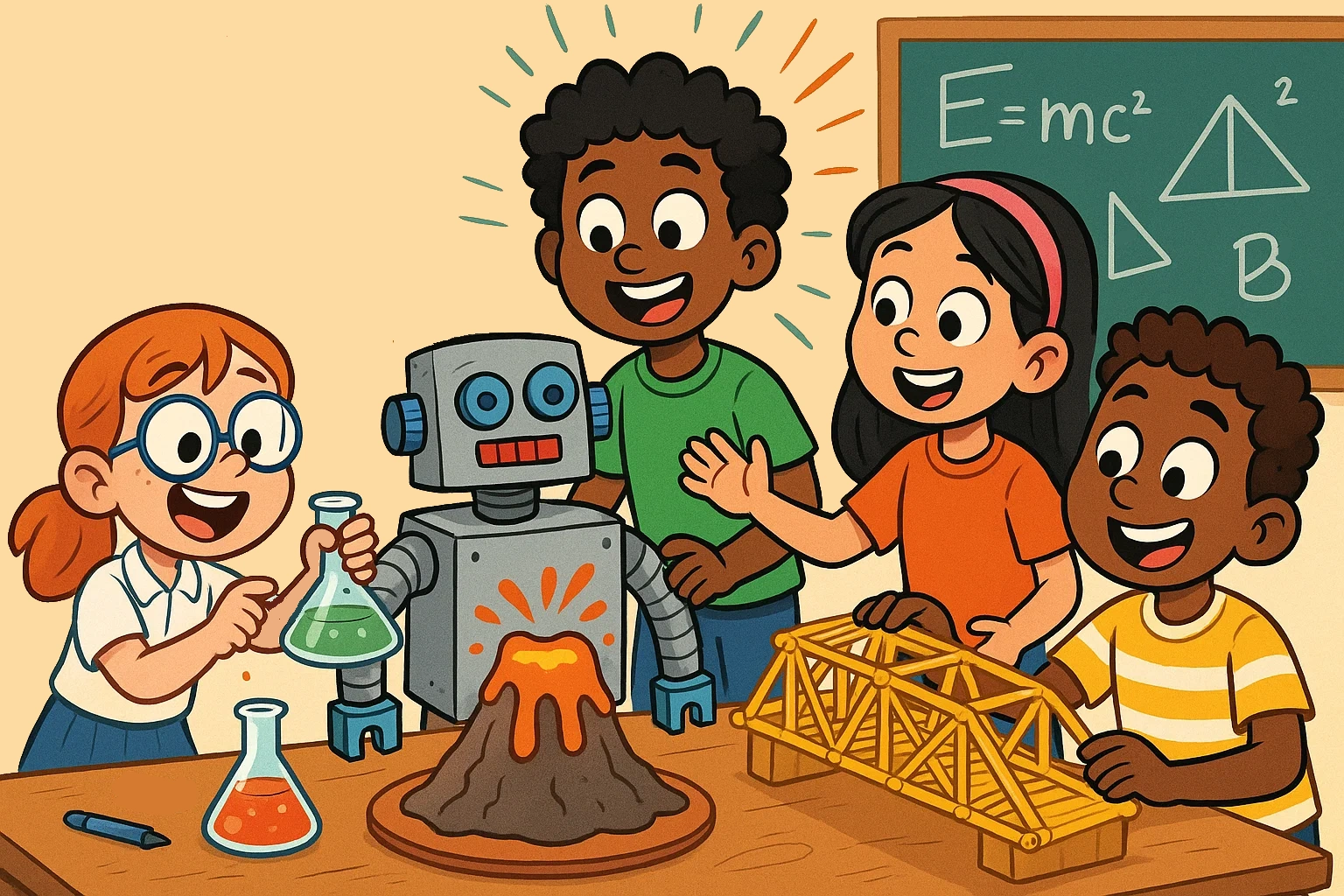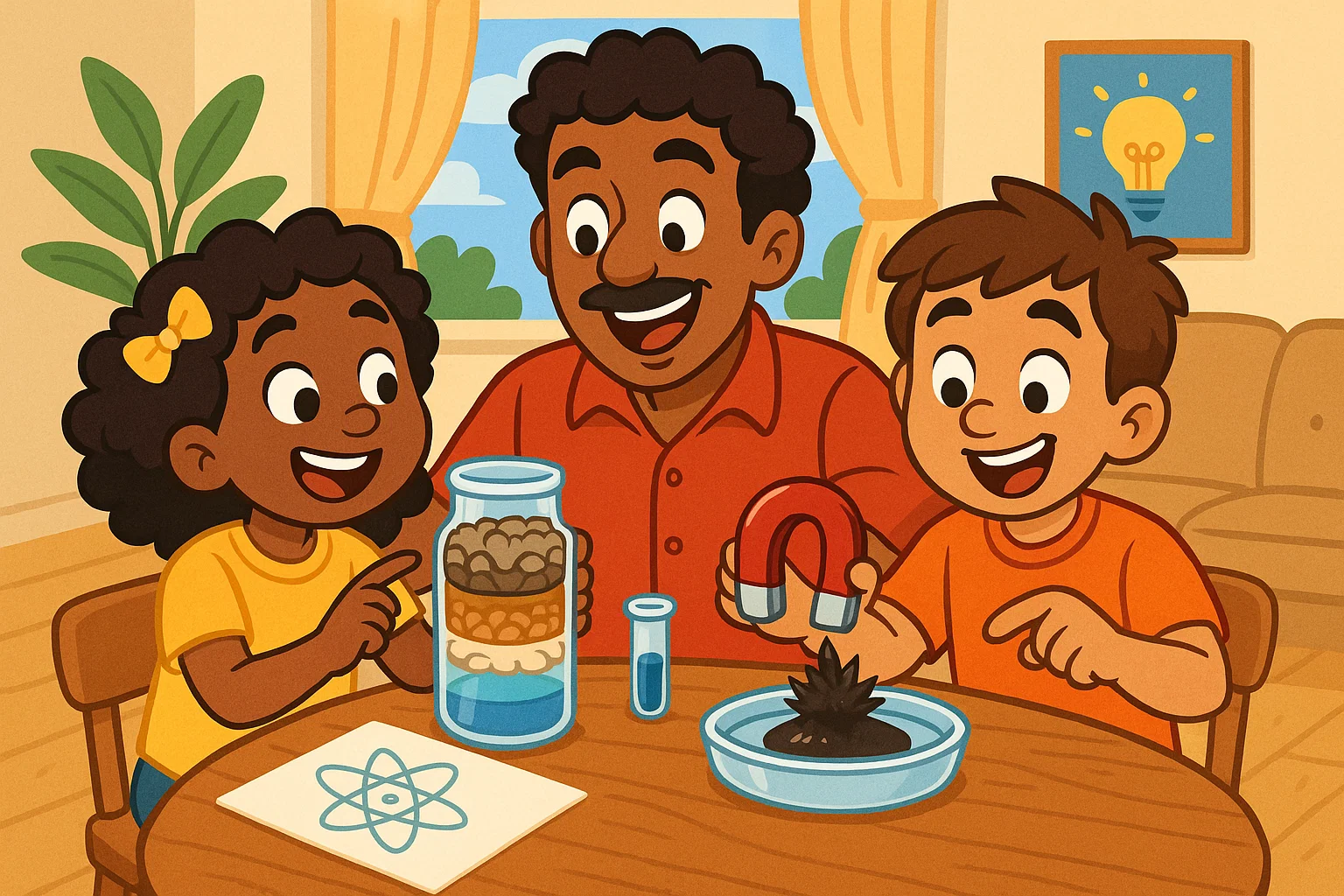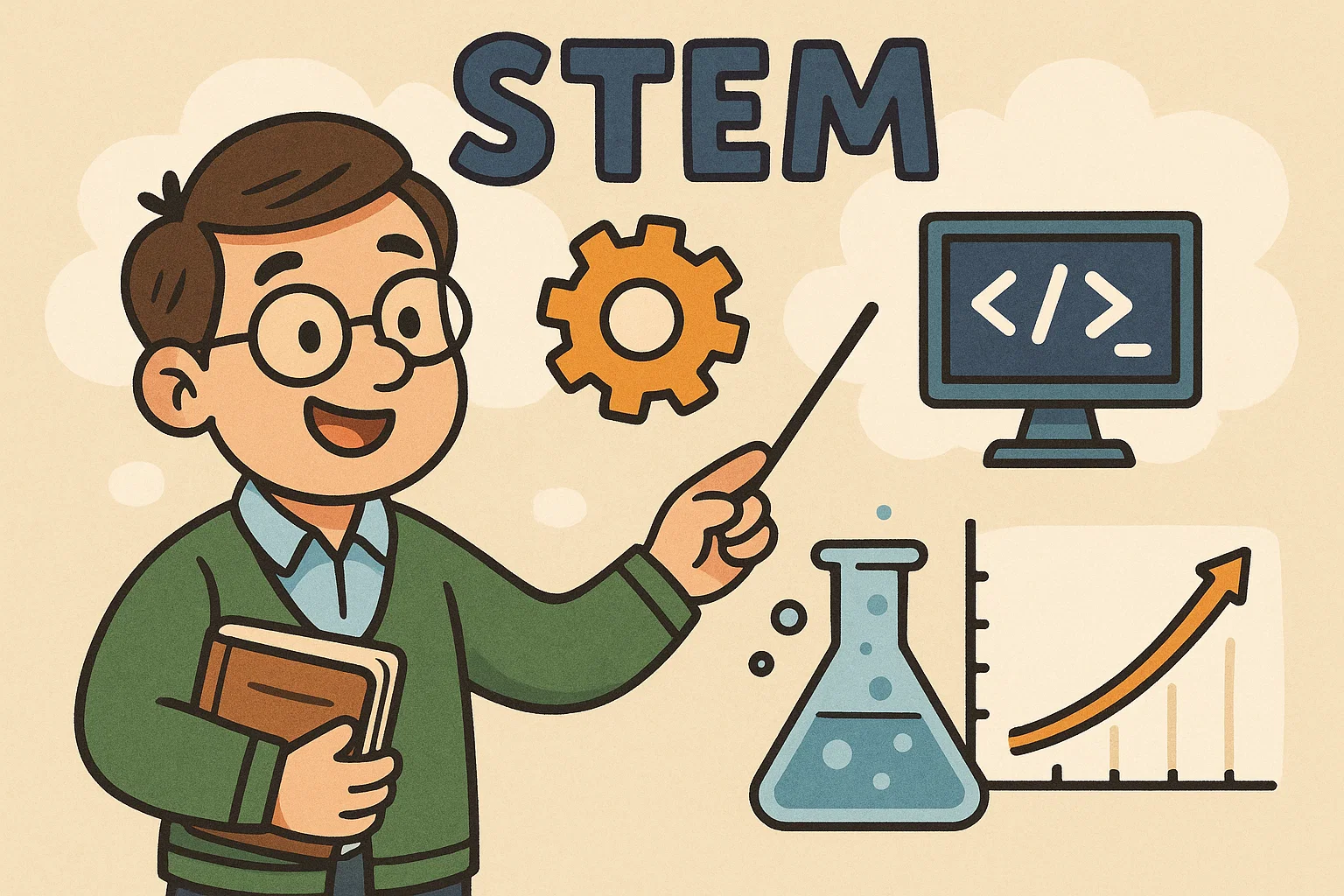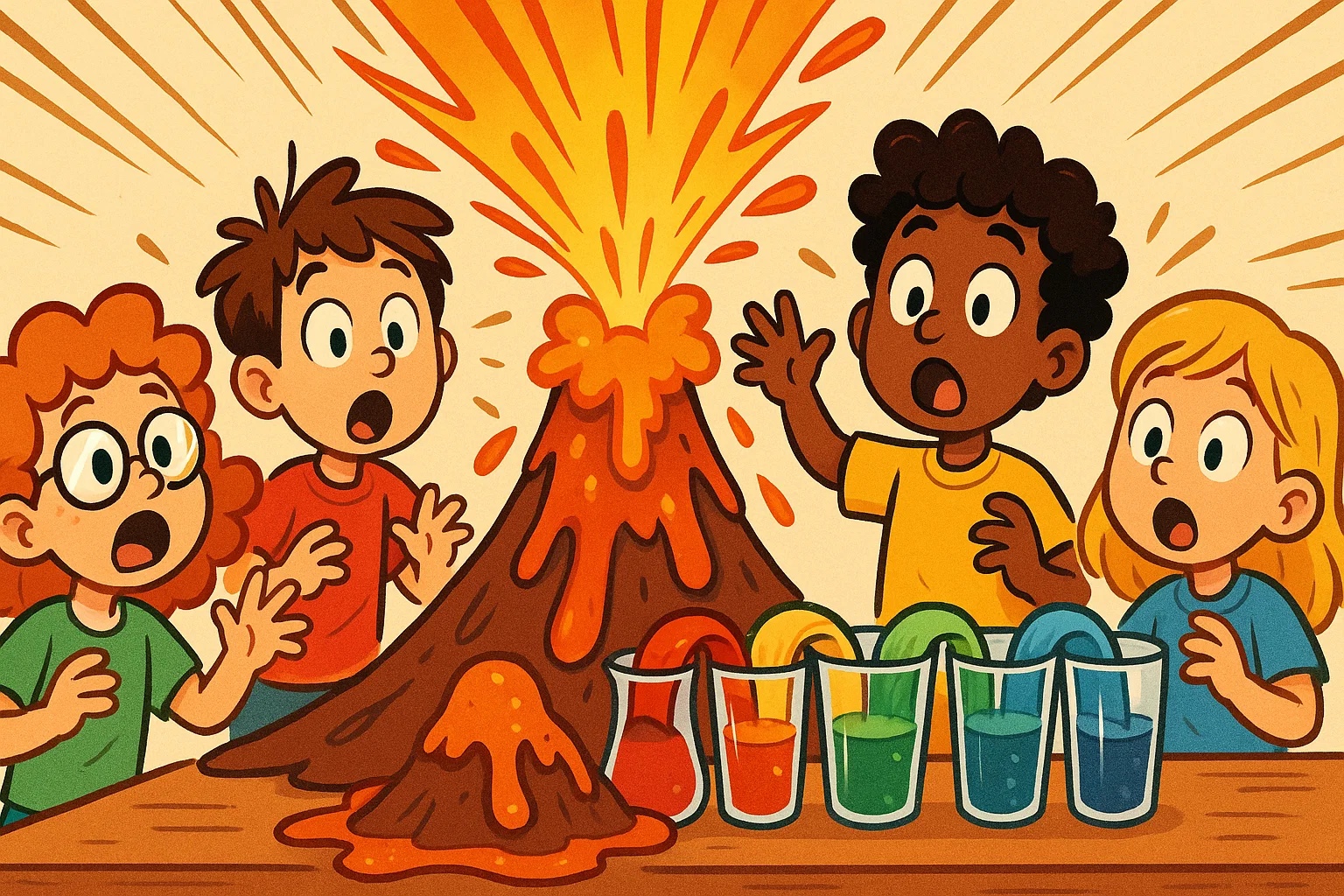Fun STEM Activities & Experiments for Kids

STEM education has become increasingly vital in preparing children for tomorrow’s challenges. By introducing hands-on learning experiences early in life, parents and educators can nurture critical thinking skills while sparking curiosity about the world around us.
The beauty of STEM activities lies in their accessibility – most experiments can be conducted using household items you likely already have. From engineering concepts demonstrated through balloon cars to biology lessons taught through slime creation, these interactive experiences teach children to think creatively while building foundational knowledge in science, technology, engineering, and mathematics.
Simple STEM Activities You Can Do At Home 🏠

Creating a stimulating learning environment doesn’t require expensive equipment or laboratory-grade materials. The most effective STEM experiments often use common household items to demonstrate complex scientific principles. Here are engaging activities that combine fun with educational value.
Balloon Car Race
This classic engineering experiment teaches children fundamental physics concepts while encouraging creative problem-solving. Students learn about force, motion, and energy transfer as they design and test their balloon-powered vehicles.
Materials needed:
- Plastic water bottle
- 4 bottle caps (wheels)
- 2 wooden skewers (axles)
- Balloon
- Tape
- Straw
The balloon car activity introduces engineering concepts by challenging kids to optimize their design for maximum distance. As air escapes from the balloon, it demonstrates Newton’s third law of motion – for every action, there’s an equal and opposite reaction. This STEM experiment naturally incorporates math skills as children measure distances and calculate improvements.
| Design Element | Impact on Performance | Learning Opportunity |
| Wheel size | Affects speed and distance | Physics and geometry |
| Weight distribution | Influences stability | Engineering principles |
| Balloon size | Determines energy source | Energy conservation |
DIY Rocket Launch
Transform your backyard into NASA’s launch pad with this exciting physics demonstration. Using simple materials, children explore the principles of pressure, force, and trajectory while experiencing the thrill of space exploration.
Required materials:
- Empty film canister or small container
- Antacid tablet
- Water
- Construction paper
- Tape
This hands-on activity teaches students about chemical reactions and pressure buildup. When the antacid tablet dissolves in water, it produces carbon dioxide gas, creating enough pressure to launch the container. The experiment teaches children about states of matter, chemical reactions, and the engineering challenges faced by real rocket scientists.
Magnetic Slime Fun
Making slime becomes a fascinating introduction to chemistry and magnetism when you add iron oxide powder to the traditional recipe. This STEM activity introduces concepts of non-Newtonian fluids while demonstrating magnetic properties.
Ingredients:
- White school glue
- Saline solution (contact lens solution)
- Iron oxide powder (available online)
- Strong neodymium magnet
- Mixing bowl
The magnetic slime experiment demonstrates how materials can exhibit both liquid and solid properties depending on the applied force. Children observe scientific phenomena in real time as the slime moves toward magnets and changes consistency when manipulated. This activity effectively combines chemistry, physics, and sensory exploration.
Water Filtration Experiment 💧
Understanding clean water access becomes tangible through this environmental science experiment. Children build their own filtration systems using layered materials, learning about water treatment processes and environmental engineering.
Materials list:
- Clear plastic cups
- Coffee filters
- Cotton balls
- Sand
- Gravel
- Activated charcoal
- Dirty water (with food coloring and debris)
This experiment teaches children about water quality, environmental science, and engineering design processes. Students observe how different materials remove various contaminants, introducing concepts of particle size, absorption, and filtration efficiency. The activity connects to real-world environmental challenges while demonstrating practical engineering solutions.
Pipe Cleaner Engineering Challenge
Structural engineering becomes accessible through pipe cleaner construction projects. Children learn about stability, load distribution, and architectural principles while building towers, bridges, and geometric shapes.
This hands-on learning experience teaches fundamental engineering skills including:
- Structural stability
- Load-bearing capacity
- Geometric relationships
- Problem-solving strategies
Students naturally develop spatial reasoning abilities as they manipulate materials to create three-dimensional structures. The flexibility of pipe cleaners allows for immediate adjustments, encouraging iterative design improvements.
STEM Education and Its Importance 📚

Modern education research consistently demonstrates the value of integrated STEM learning approaches. According to educational studies, students who engage with hands-on STEM activities show improved performance across multiple subject areas, including enhanced mathematical reasoning and stronger scientific literacy.
Benefits of STEM Learning
STEM education provides children with essential skills for navigating an increasingly complex world. These programs teach students to see connections between different subjects while developing analytical thinking capabilities.
Cognitive development benefits include:
- Enhanced problem-solving abilities
- Improved mathematical reasoning
- Stronger spatial visualization skills
- Better understanding of cause-and-effect relationships
- Increased comfort with technology integration
Research from educational institutions suggests that early STEM exposure may indicate increased likelihood of pursuing science and engineering careers later in life. However, the benefits extend beyond career preparation – these skills enhance daily decision-making and critical analysis abilities.
Fostering Curiosity in Science
Natural curiosity serves as the foundation for scientific discovery. Children are inherently drawn to exploration and experimentation, making them ideal candidates for STEM learning experiences. Effective programs capitalize on this natural tendency by providing structured opportunities for investigation.
“The important thing is not to stop questioning. Curiosity has its own reason for existence,” observed Albert Einstein, highlighting the fundamental role of wonder in scientific progress.
Successful STEM programs encourage children to:
- Ask meaningful questions about their observations
- Develop hypotheses about natural phenomena
- Test their predictions through controlled experiments
- Analyze results and draw evidence-based conclusions
Math and Logic in Everyday Activities
Mathematics becomes more meaningful when children see its practical applications. STEM experiments naturally incorporate mathematical concepts including measurement, data analysis, geometry, and basic arithmetic operations like addition and subtraction.
Consider how a simple candy crystal growing experiment incorporates multiple mathematical concepts:
| Math Concept | Application in Crystal Growing |
| Ratios and proportions | Mixing solution concentrations |
| Measurement | Recording crystal dimensions |
| Time and patterns | Tracking growth rates |
| Data collection | Maintaining observation logs |
Engineering Challenges for Creative Minds
Engineering thinking involves systematic problem-solving approaches that benefit children across all academic areas. Through design challenges, students learn to identify problems, brainstorm solutions, test ideas, and refine their approaches based on results.
Effective engineering activities share common characteristics:
- Clear objectives with measurable outcomes
- Material constraints that encourage creativity
- Opportunities for testing and refinement
- Connections to real-world applications
These challenges teach children that failure represents a learning opportunity rather than a final outcome, fostering resilience and persistence.
Amazing Science Experiments 🔬

Science experiments capture children’s imagination while demonstrating fundamental scientific principles. These activities transform abstract concepts into tangible experiences, making complex topics accessible to young learners.
The Exploding Volcano Experiment
Perhaps the most iconic science demonstration, the baking soda and vinegar volcano teaches children about chemical reactions, geology, and gas production. This classic science experiment remains popular because it combines dramatic visual effects with clear scientific principles.
Materials required:
- Modeling clay or playdough
- Small jar or plastic cup
- Baking soda
- White vinegar
- Red food coloring
- Liquid dish soap
- Funnel
The volcano experiment demonstrates acid-base reactions while introducing geological concepts about real volcanic activity. When vinegar (acetic acid) combines with baking soda (sodium bicarbonate), it produces carbon dioxide gas, creating the dramatic “eruption” effect. Adding dish soap increases foam production, while food coloring makes the reaction more visually appealing.
The Walking Water Phenomenon
This captivating experiment demonstrates capillary action and color mixing while creating a beautiful rainbow effect. Children observe how water travels through paper towels, defying gravity through molecular attraction forces.
Setup materials:
- 7 clear plastic cups
- Paper towels
- Red, yellow, and blue food coloring
- Water
Students arrange cups in a line, filling alternating containers with colored water. Paper towel strips connect each cup, creating bridges for water movement. Over several hours, children observe water traveling between containers, mixing colors and equalizing levels. This experiment teaches concepts including:
- Capillary action and surface tension
- Color theory and primary color mixing
- Molecular properties of water
- Equilibrium and balance
Building a Simple Electrical Circuit
Introducing electricity concepts through hands-on circuit building demystifies this essential technology. Children learn about electrical flow, conductivity, and basic electronic components while creating functional devices.
Required components:
- LED lights
- Coin-cell batteries
- Copper tape or wire
- Cardboard base
- Small switch (optional)
This STEM activity introduces students to electrical engineering concepts while teaching safety principles for working with electricity. Children discover which materials conduct electricity by testing various household items, learning to distinguish between conductors and insulators.
The circuit experiment naturally incorporates mathematics as students count components, measure wire lengths, and observe cause-and-effect relationships. Successful completion builds confidence while providing practical knowledge about everyday technology.
